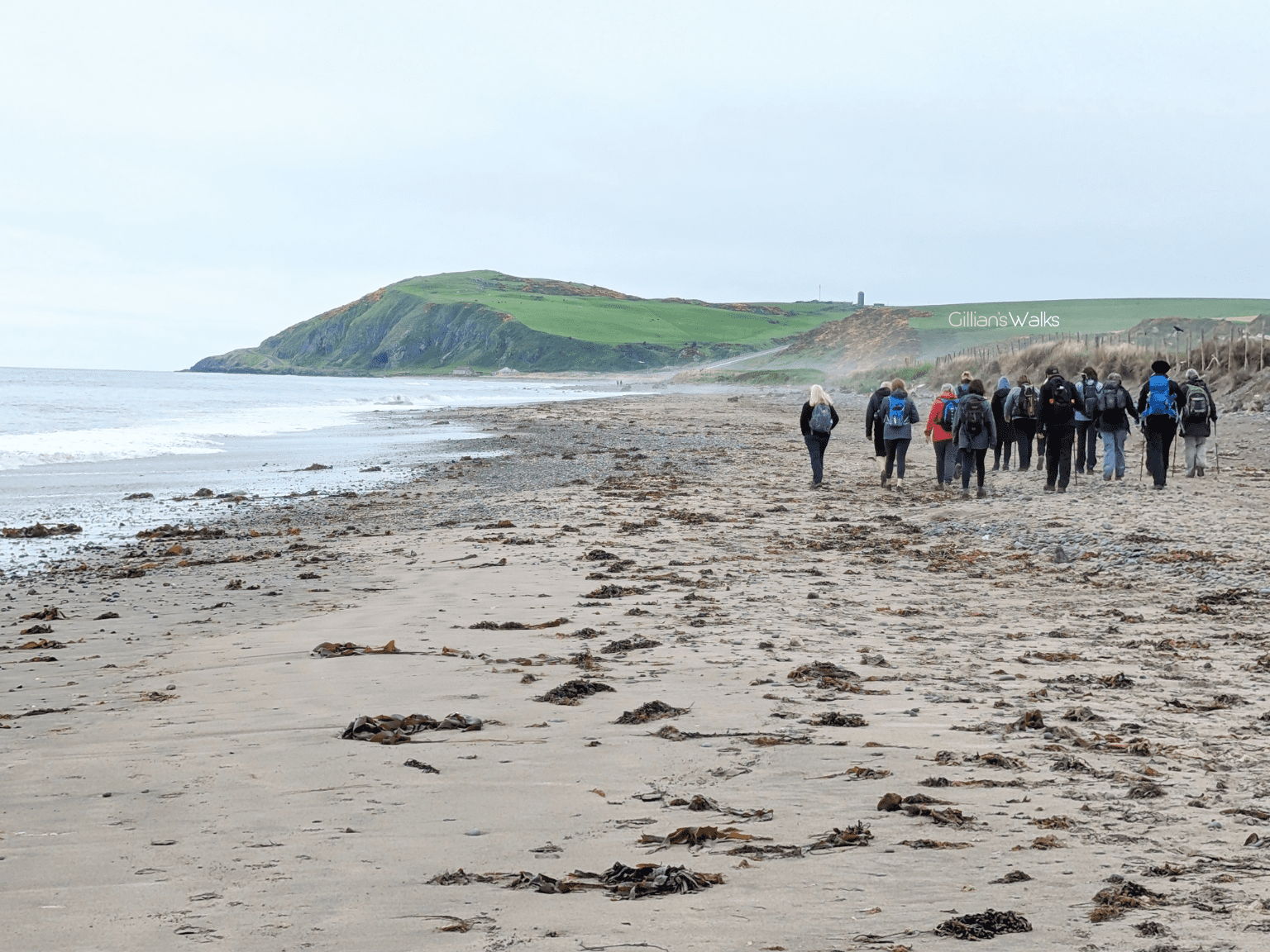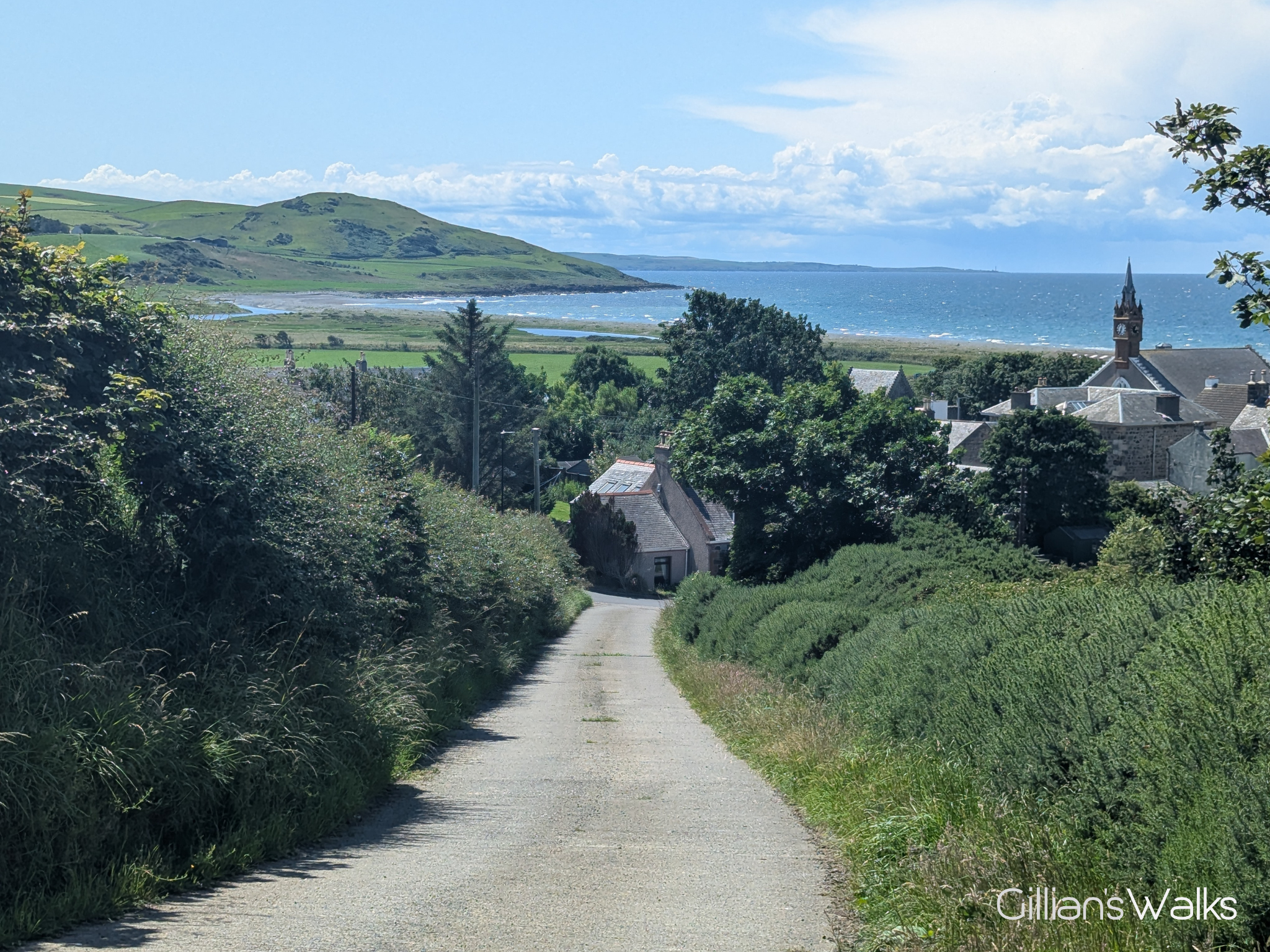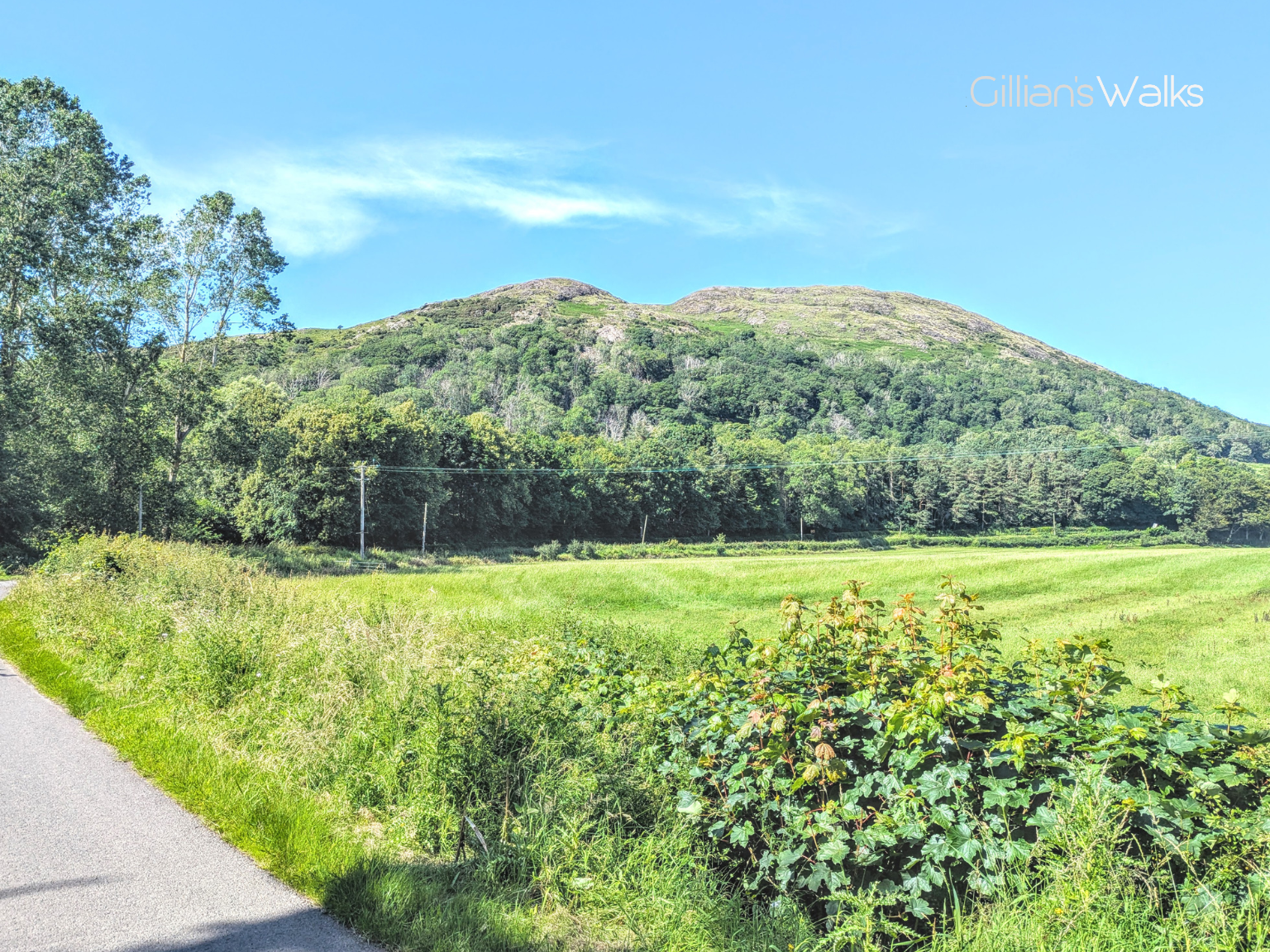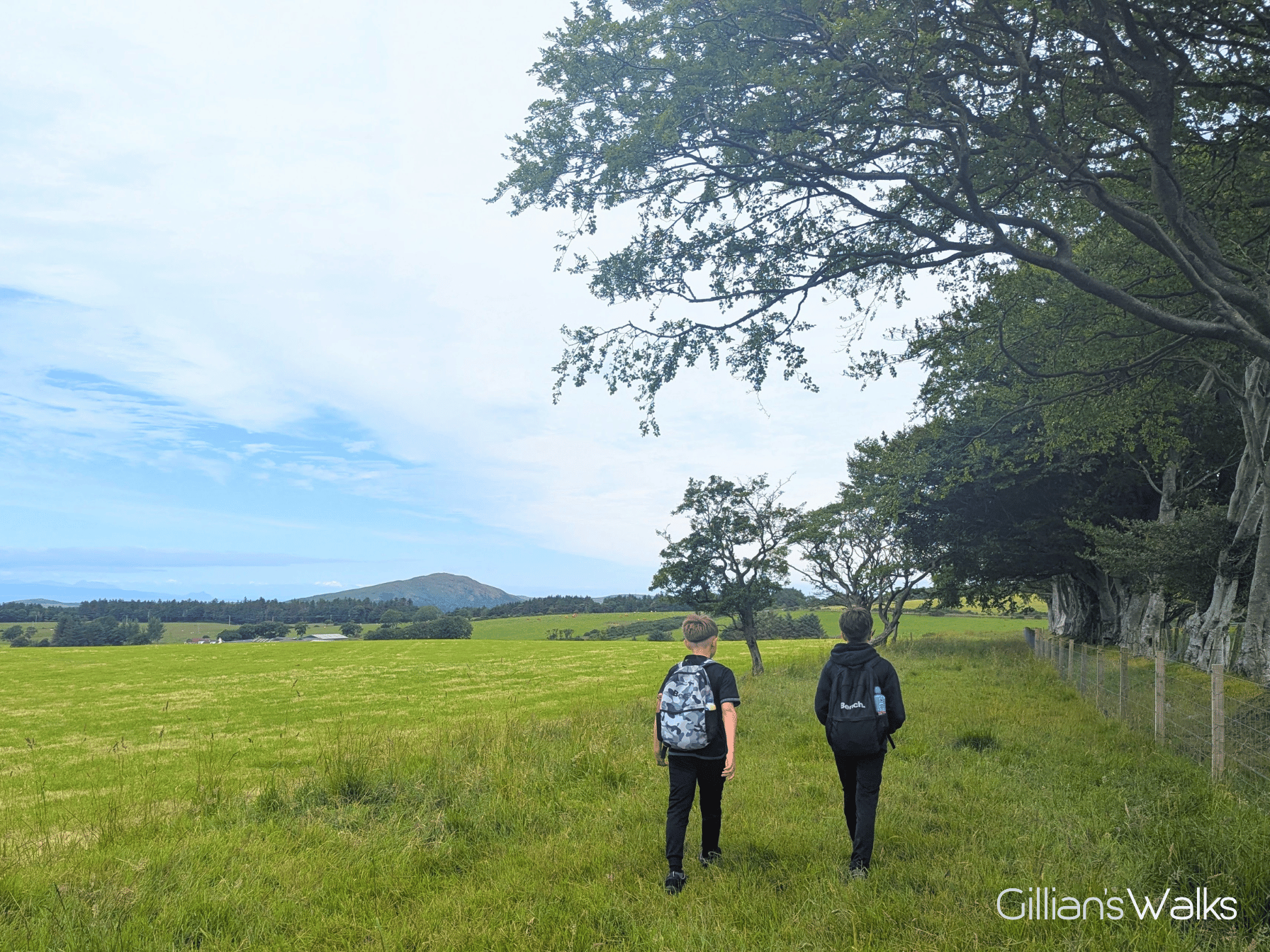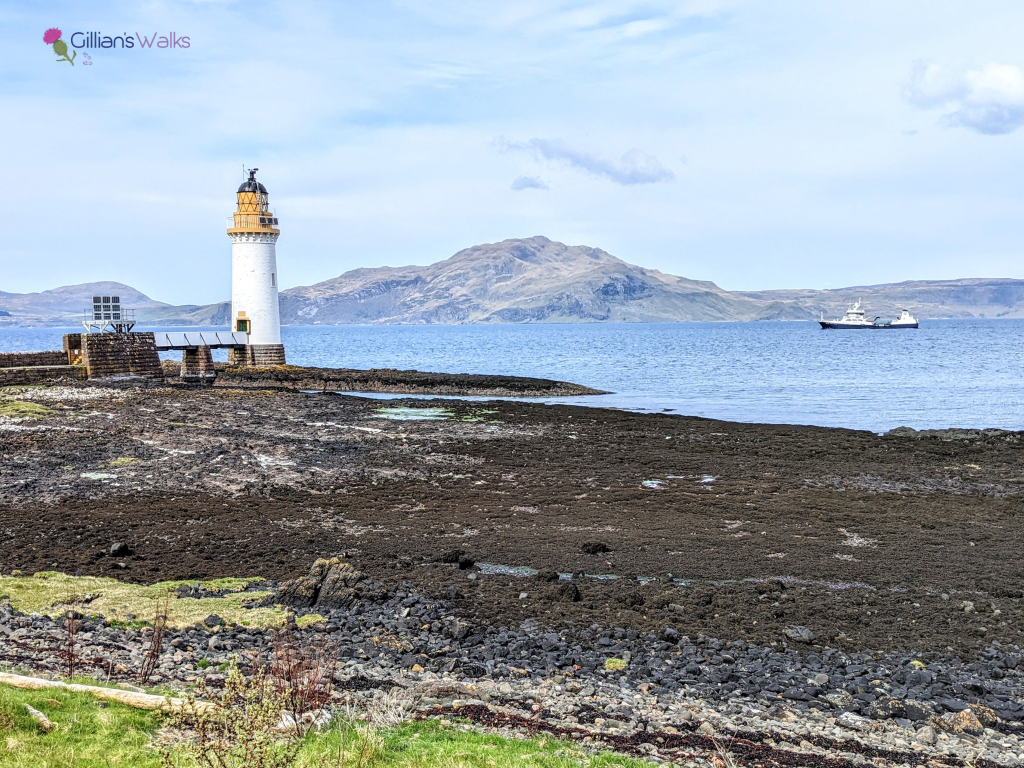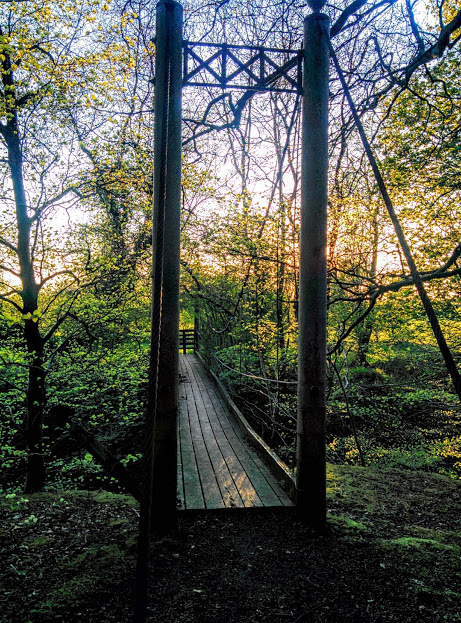TERRAIN: Graded Easy: this is a flat walk at sea level, on a mixture of sand and shingle beach surfaces. It can be walked at high tide but there are more features of interest to see during lower states of tide. No stiles or steps. One gate.
![]() Car parking available at Craigiemains Garden Centre (free) – however please check opening times as the gates will be closed shortly after! There is also a small parking area and on-street parking at the harbour (free) and if you wish to extend the walk by approx half a mile you could consider Foreland Car Park to the south (also free). Local bus services stop on Main Street Ballantrae. Closest train station is Girvan, 13 miles north.
Car parking available at Craigiemains Garden Centre (free) – however please check opening times as the gates will be closed shortly after! There is also a small parking area and on-street parking at the harbour (free) and if you wish to extend the walk by approx half a mile you could consider Foreland Car Park to the south (also free). Local bus services stop on Main Street Ballantrae. Closest train station is Girvan, 13 miles north.
![]() Customer toilets at Craigiemains Garden Centre.
Customer toilets at Craigiemains Garden Centre.
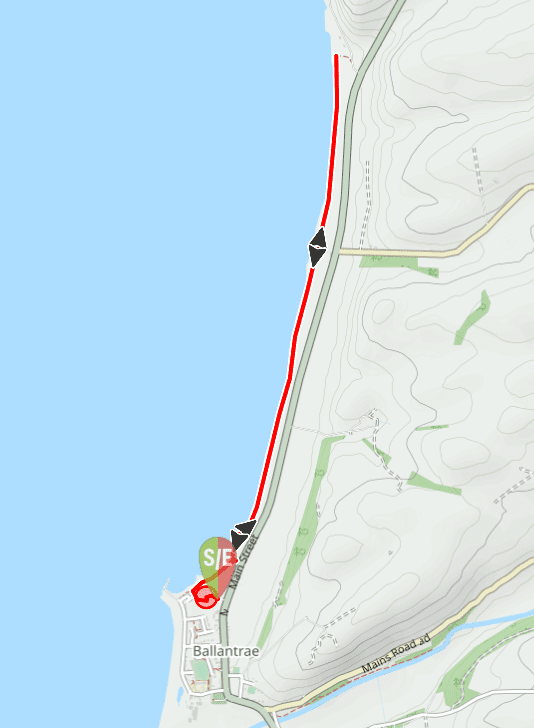
View full route description
From Craigiemains Garden Centre, walk around the back of the building, past the kids play area and across the lawn to a kissing gate which leads to a grassy track between the beach and some cottages.
Turn right along the track and on reaching an access ramp go down onto the beach.
Turn right to walk north along the beach until you reach Bennane Head.
Return via the same route.
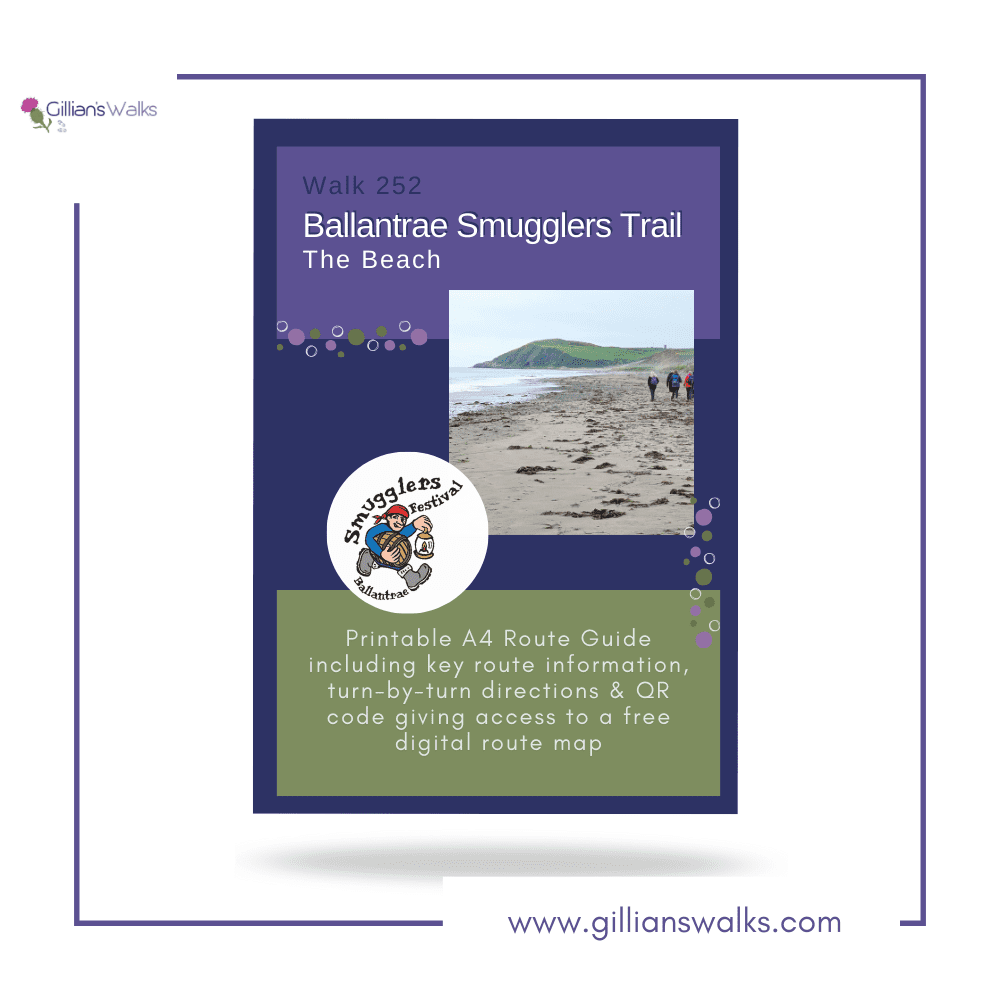
Printable Route Guide – Ballantrae Smugglers Trail: The Beach
Download, Print, Go! This PDF Route Guide has been carefully designed to allow you to easily print a copy of the key information for this route on an A4 page to take with you on the walk. Perfect for offline use!
Walk Report: 3rd July 2025
There’s a lot to love about Ballantrae Beach, and I hadn’t realised that it is 2 miles long! With it being part of the Ayrshire Coastal Path route, I had walked along it many times in the past but never as a walk in its own right. In doing so, all of its fascinating features stood out ever more prominently and I wondered if this might just be one of the best beach walks in Scotland. The people of Ballantrae are fortunate to have it on their doorsteps! Let’s take a look at some of the reasons why I think this…
Historic Harbour – Looking south from the Craigiemains Garden Centre gate, you can enjoy a great view of Ballantrae Harbour. Seeing it peaceful like this today with one or two small boats, it is hard to believe that the Ballantrae winter herring fishing season was once the most important in Scotland. Back in the 1870s, some 300 boats might have been using the foreshore here. Huge salmon nets would have stretched from Lendalfoot to Finnart’s Bay (south of Glenapp) and would have been checked twice a day. The foreshore at Ballantrae is where the nets were hung to be dried, cleaned and repaired. Salmon, lobster and scallops would also have been fished here, and the harbour would have been used for the transport of timber and coal. Ballantrae is also a port of registry – look out for boats with BA on them and you’ll know they were registered here!
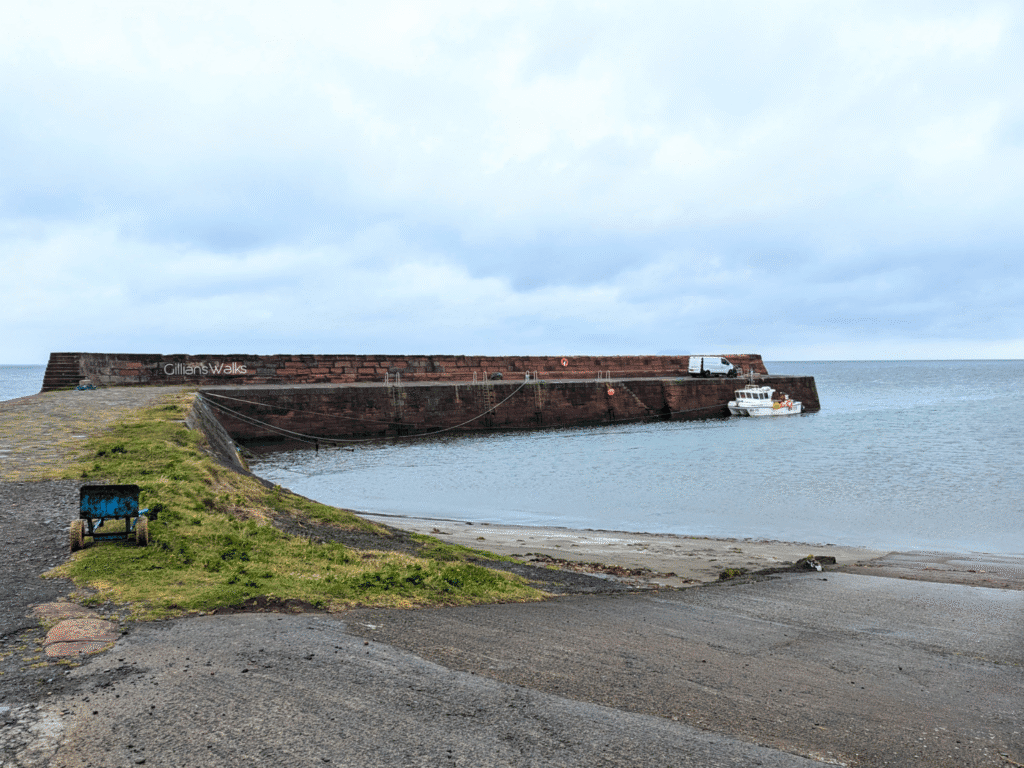
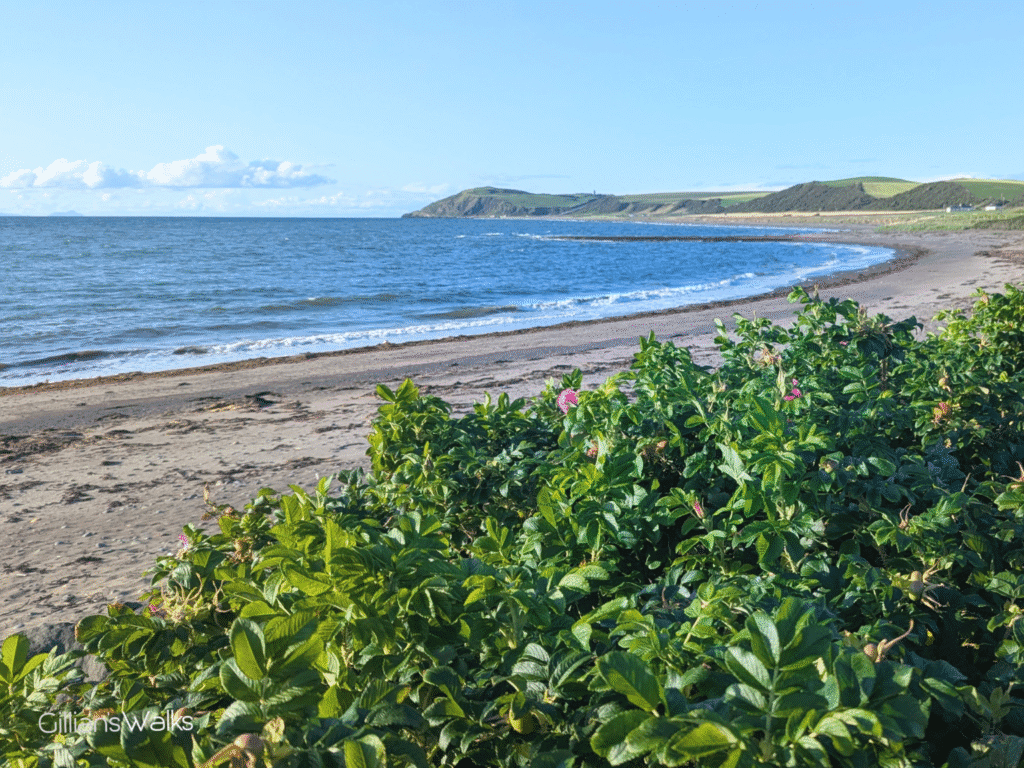
Geology – The coast from Ballantrae to Girvan is designated as a SSSI (Site of Special Scientific Interest) due to its unusual geology. People come from all over the world to study the rocks here. As you walk along the beach, look out for many different types – you may not know what they are, but if you are anything like me you will be fascinated by them. What you see will depend on the state of the tide when you are there – the best is to wait for low tide which reveals all sorts of large boulders, and some of them – to me at least – seem like they are from a different planet. Of particular interest is the large slab of red sandstone which seems so out of place one has to wonder how it came to be there at all! Take time to notice the small things too – like the abundance of colourful pebbles.




Shipwreck – Approximately a mile and a half along the beach you may spot the wooden skeletal remains of a shipwreck! How much you see, if anything at all, depends on the shifting of the shingle here, which rises and falls depending on the tides and any recent storms can cover up the wreckage completely. These belong to Richard III, a Danish boat which ran aground here in 1932. Here is her story, kindly provided by the Ballantrae Smugglers Festival:
We are told that the Richard left Canada with a cargo of timber, which she discharged at Newry in Ireland where she left bound for Denmark. In the Irish Channel she encountered tempestuous seas, the waves sweeping her decks and carrying away one of her lifeboats. She was battered about, and the crew of five, under Captain Sirenson, did their best to keep her in the open sea, but through the force of the gale were compelled to attempt a landing on the Scottish coast. They were eventually carried over a reef of rocks about a mile from Ballantrae, running on a sandbank. It was high tide at the time, and the signal of distress was hoisted, seen by Mr Ede, station officer of the Ballantrae Coastguards, who along with his men and the Ballantrae Lifeboat Saving Apparatus Company, headed along the shore in the direction indicated by the signal. On arriving, they found that the crew had floated a buoy with ropes flung to farm hands from Balig Farm who had collected on the beach. The Life Saving Apparatus Company joined in the rescue, and many of them plunged into the raging sea at great personal risk in order to assist the seamen. The sailors worked their way down the rope hand over hand, and those on the shore formed a human chain. Thanks to the brave efforts of these men, all of the crew were saved.
Ballantrae Digital Archive has photos of the Richard on the beach soon after she ran aground – take a look and then read on….
Both of the photos below are my own – the one on the left was taken in May 2023 and the one on the right was taken in July 2025. Use the slider to see the difference! Isn’t it amazing that a whole boat can almost completely disappear in less than 100 years! And it raises the question in my mind: what else might be buried beneath our sandy shores???


Wildlife – Birds such as Oystercatchers and Curlew can frequently be seen on Ballantrae Beach. In fact, between April and August take care to walk below the high-tide line to avoid trampling their nests or chicks. In the sky, keep an eye out for Gannets: they nest on Ailsa Craig and can often be seen diving for their dinner off the shore here. Jellyfish, many varieties of seaweed, crabs, lobsters, sea potatoes…. salt-loving plants like Sea Thrift growing out of the craggy volcanic rocks at the northern end of the beach…. The list of treasures you might spot is endless! Here are a few of my own finds:








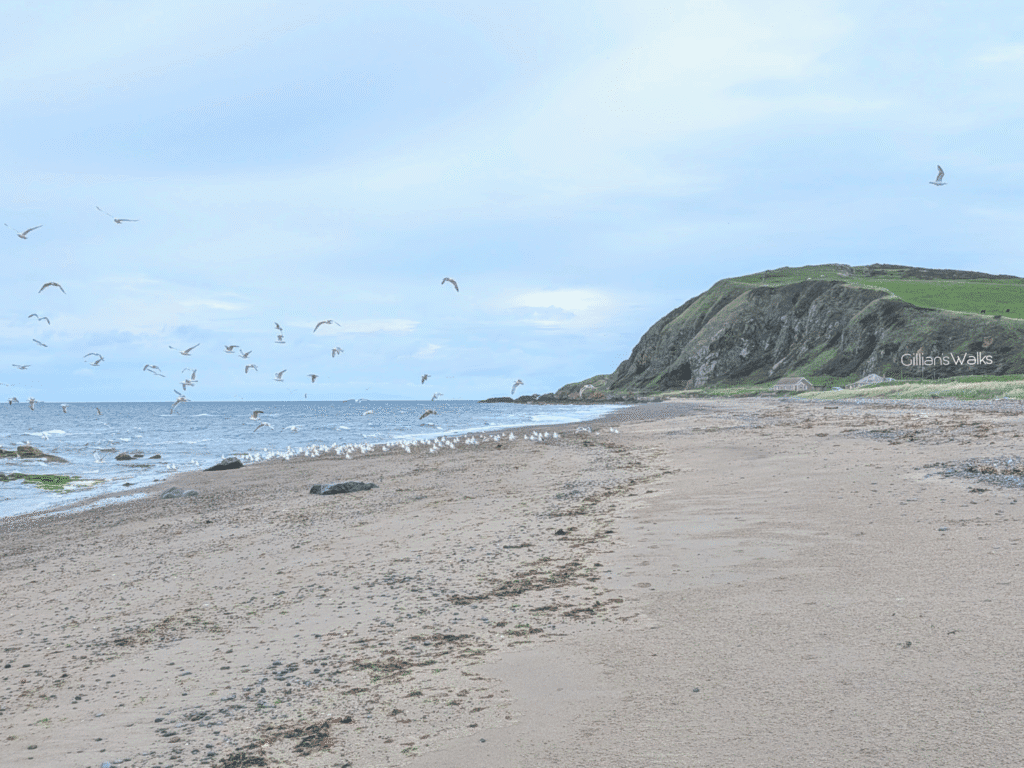
Snib’s Cave – As you walk north along Ballantrae Beach you can’t help but admire the headland before you – Bennane Head – with its craggy cliffs giving way to fertile flat tops commonly used for grazing cattle. Look closer and you might also spot a cave entrance. This is Bennane Cave – or Snib’s Cave. You might even choose to extend your walk slightly to visit the inside of the cave, which was actually occupied until the early 1980s, believe it or not. Henry Ewing Torbet (nicknamed Snib after a previous occupant of the cave), spent the last 30 years of his life living here! It may look remote, but in fact the old single-track A77 road runs directly past the entrance, and so it was no secret that someone inhabited the cave. Snib seemingly survived mainly by hunting rabbits, gathering leftover potatoes from the fields, fishing, using driftwood to make fires… It is said that he didn’t claim benefits, choosing to be self-sufficient. He very much kept himself to himself, preferring not to interact with anyone. However some of the locals used to leave him food or clothing near the cave, which he’d collect after they left. Snib was well-known and respected by the people of Ballantrae and many still talk about memories of seeing him around the area. After he died they erected a cairn in his memory, which can be found at the north end of the beach close to the cave. If you wish to visit the cairn and cave, you can access them by climbing up onto the grass-covered rocks at the north end of the beach. This is where the cairn is situated (see photo below). From there, hop over the low wire fence and a faint path will lead you onto the road. The cave can be easily accessed from the road.
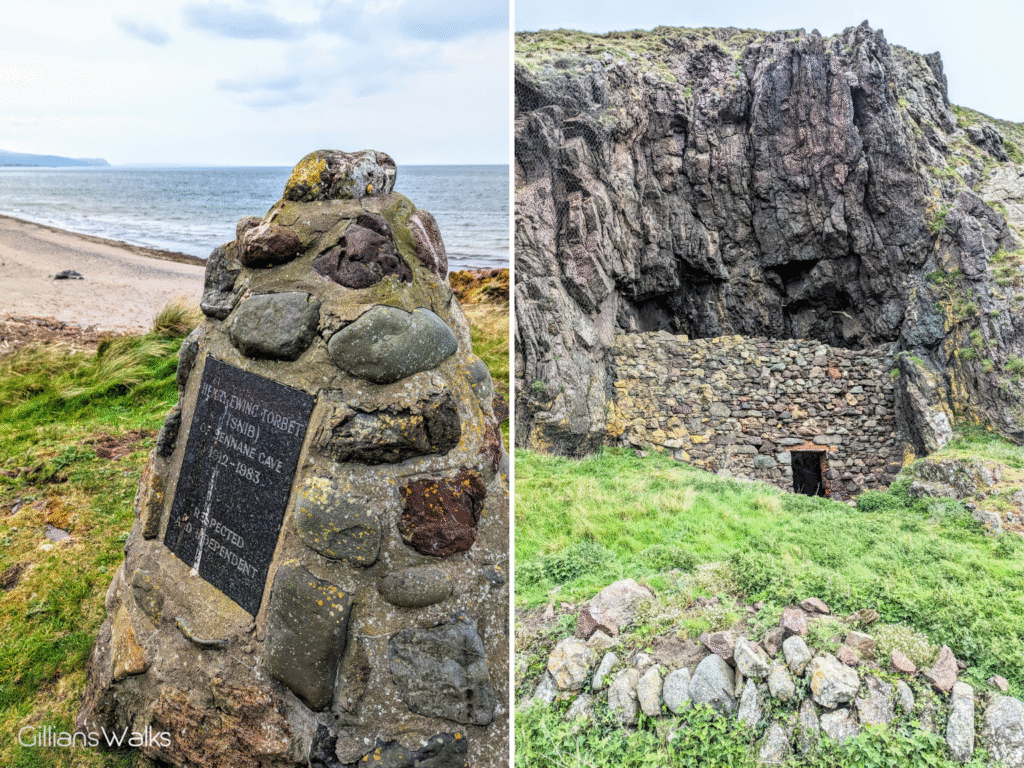
Now that you’ve made it to the end of the beach, you might choose to continue north to Lendalfoot, following the Ayrshire Coastal Path route. Look for the green and white signs. Lots more information about that walk can be found in my Ballantrae to Lendalfoot Route Guide.
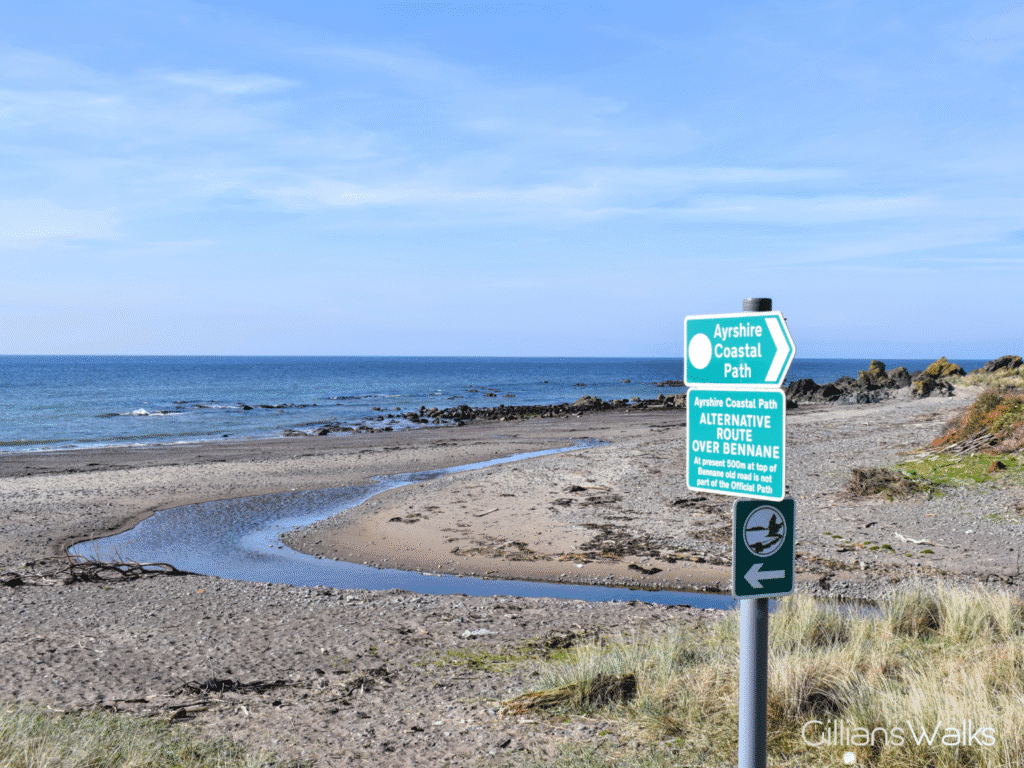
If you’re heading back to Ballantrae, here is something to ponder as you stroll back along the beach….
Ballantrae’s rich Smuggling history – In the 18th and early 19th centuries, when duties in Scotland were high, there was a constant trade in smuggled goods being brought into Ballantrae from the Isle of Man or Ireland. These places acted as storehouses of contraband goods that had paid very low duties so that they were much cheaper than the same items available in Scotland. Tobacco, brandy, rum, gin, claret and salt were all landed on the beach at Ballantrae.
The following true stories are included in this Route Guide with grateful thanks to the Ballantrae Smugglers Festival. Find out more about the festival and upcoming events on the Ballantrae Smugglers Festival Facebook page.
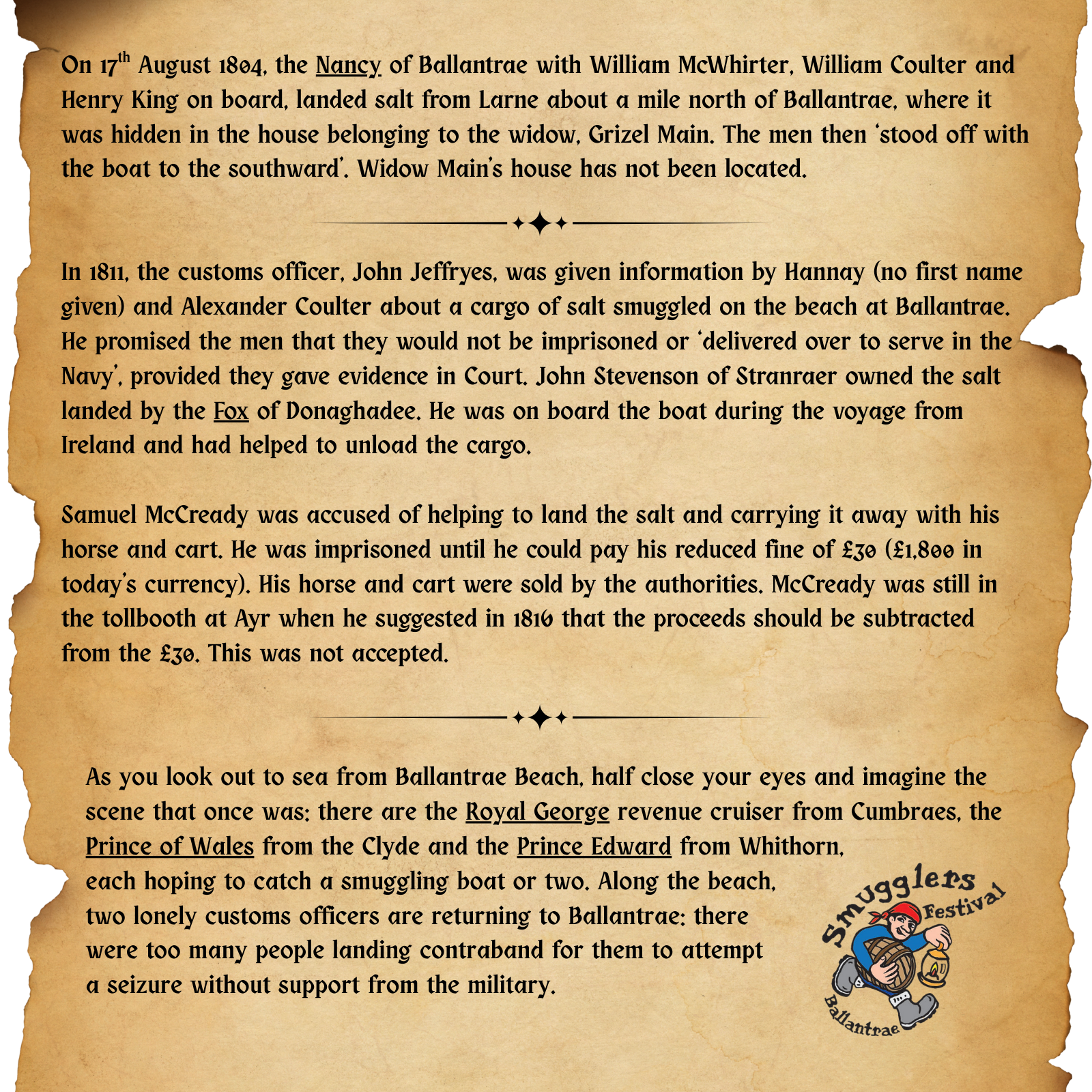
You’ll also find more information about smuggling in the book, Ballantrae’s Smuggling Story, by Frances Wilkins, available from Craigiemains Home and Garden Centre, Ballantrae.
Thanks for reading and I hope I have inspired you to head to Ballantrae very soon, and take a walk along the beach…
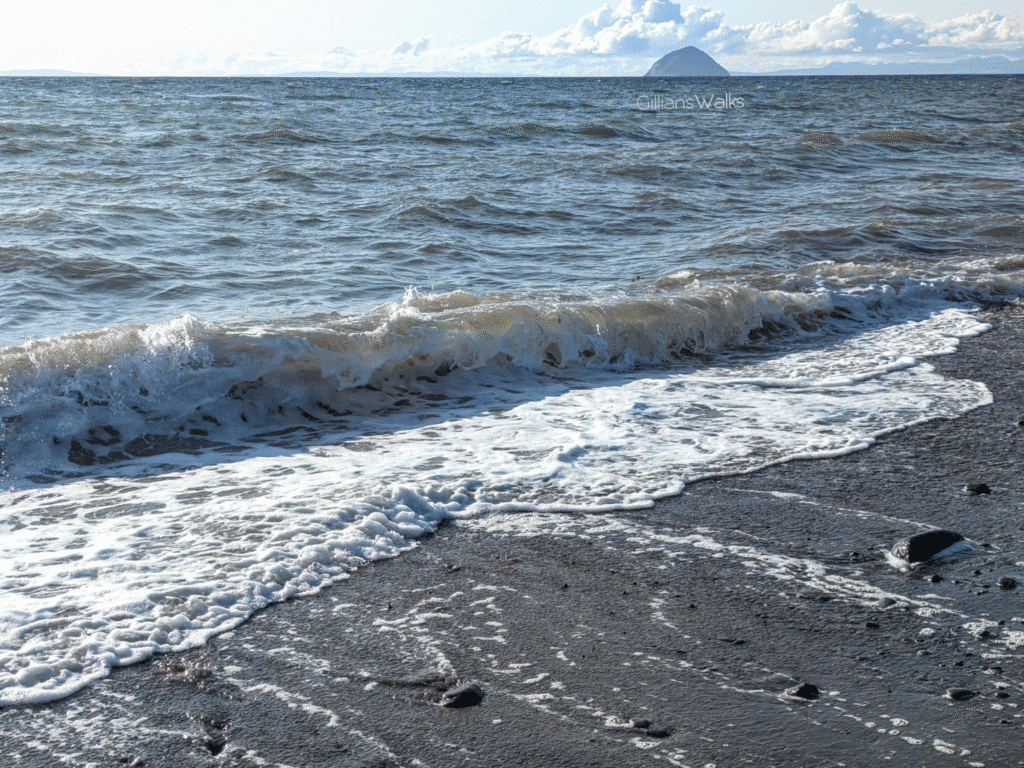
THIS ROUTE GUIDE WAS COMMISSIONED BY THE BALLANTRAE TRUST, WITH FUNDING FROM BALLANTRAE COMMUNITY COUNCIL. ALL OPINIONS AND PHOTOS ARE MY OWN.

